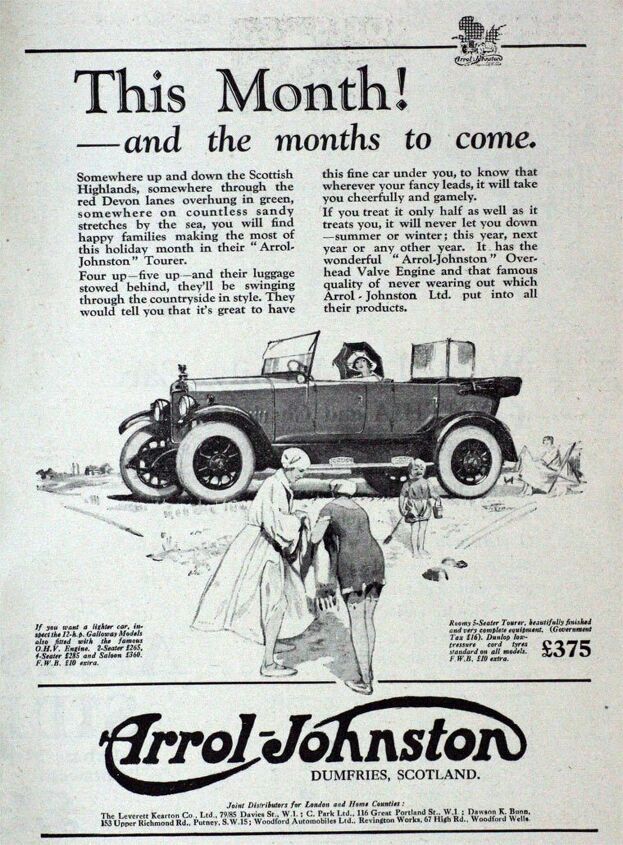#EarlyAutomobiles
Rare Rides Icons: Arrol-Johnston, First Four-wheel Brakes and Inventor of Off-road Vehicles (Part II)
In our introductory article on historical Scottish car maker Arrol-Johnston, we covered the company’s 1895 inception, its invention of four-wheel automotive brakes, and the financial difficulties that led it to become a subsidiary company under steel magnate William Beardmore. Today we finish with the brand’s rise to luxury and rather rapid demise.
Rare Rides Icons: Isotta Fraschini, Planes, Boats, and Luxury Automobiles (Part IV)
Today we conclude the story of Isotta Fraschini, a company that started as a simple import business but rose quickly through racing successes to become one of the most highly regarded luxury car makers in the world. In our last entry, the Great Depression finished off IF’s last passenger car – the 8B – in 1934. Afterward, the company moved on to heavy truck manufacture alongside its marine and aeronautical engines. Said trucks were still in production when Isotta Fraschini launched a grand final attempt at a return to the luxury passenger car market.
Rare Rides Icons: Isotta Fraschini, Planes, Boats, and Luxury Automobiles (Part III)
Isotta Fraschini advanced very quickly from its humble roots as a French car importer. Through racing recognition and the utmost attention to quality and engine technology, IF became one of the most well-regarded luxury car companies in the world. The firm’s first two large cars the Tipo 8 and 8A were considered on par with Rolls-Royce, and the company found buyers in the elite of America and Hollywood stars.
But the company’s fortunes changed in 1929 as The Great Depression bowed its head, and put a big dent in the ultra-luxury car market. The 8A concluded its run from 1924 to 1931 with under 1,000 total sales. IF was immediately ready with another super lux car as the world was still deep in The Great Depression, but company ownership attempted to pursue other passenger car avenues. And IF might’ve prospered were it not for fascist government intervention.
Rare Rides Icons: Arrol-Johnston, First Four-wheel Brakes and Inventor of Off-road Vehicles (Part I)
We discussed Arrol-Johnston briefly in our Rare Rides Icons coverage of Isotta Fraschini a few days ago. Though the brand didn’t even make it to see World War II, the company’s contributions to the advancement of passenger vehicles make it an important one. Onward, to Scotland!
Rare Rides Icons: Isotta Fraschini, Planes, Boats, and Luxury Automobiles (Part II)
Isotta Fraschini never intended to build its own cars and was founded as an Italian-based importer of French vehicles and engines. But as we learned in Part I, after a few years in the business its small group of owners experimented with building their own cars. Then they tried their hand at winning races with Tipo D in 1905. After D’s successor the Tipo FE was unsuccessful at racing, the company redirected itself and decided to make sporting luxury cars instead. We pick up the action in a year many of you remember vividly: 1910.
Rare Rides Icons: Isotta Fraschini, Planes, Boats, and Luxury Automobiles (Part I)
Founded at the turn of the 20th century, Isotta Fraschini dabbled in different modes of transportation during the handful of decades the original company was operational. Though it ended up as a luxury carmaker to rival the likes of Mercedes-Benz, the founders of Isotta Fraschini never intended to make a car at all.





















Recent Comments